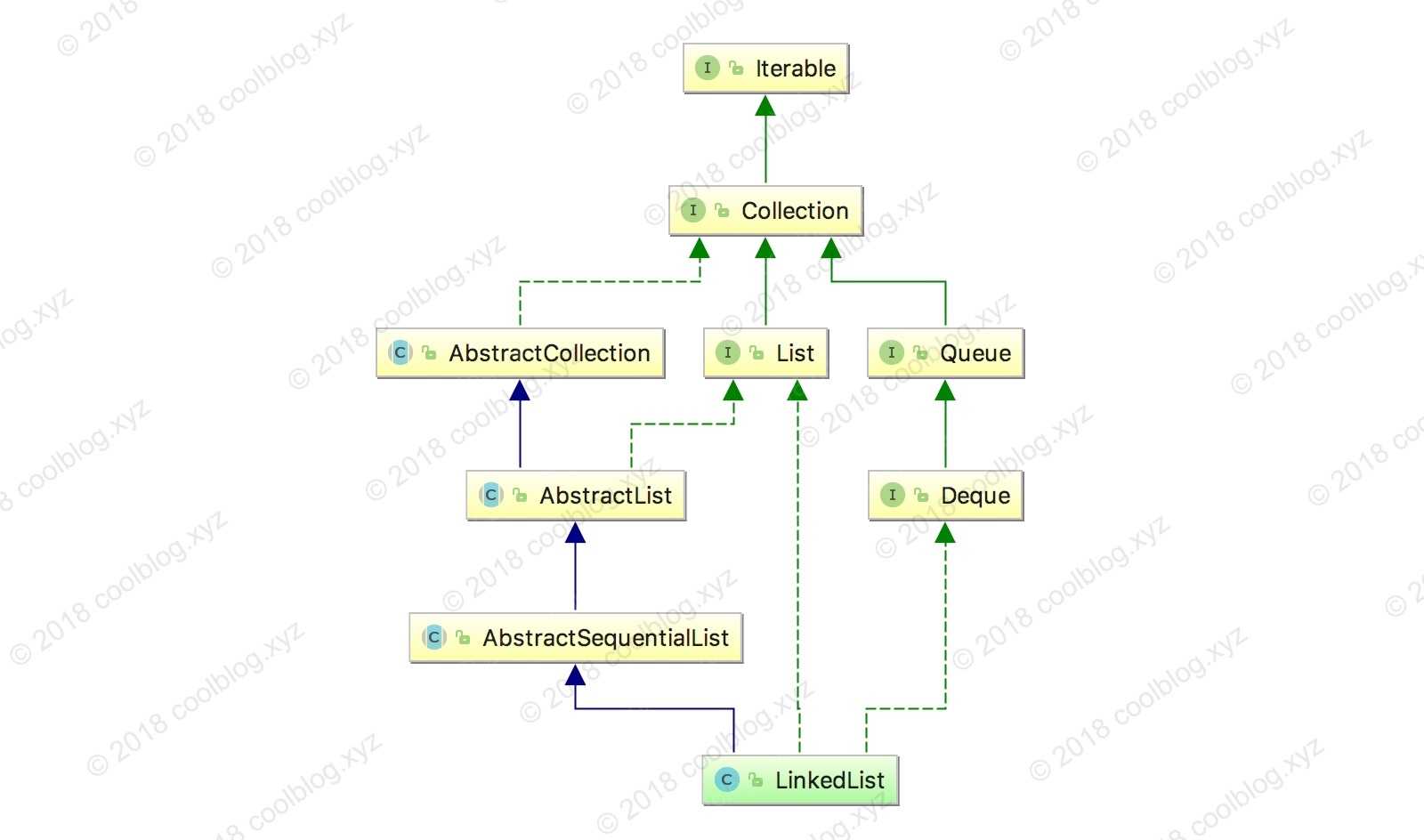LinkedList 是 Java 集合框架中一个重要的实现,其底层采用的双向链表结构。和 ArrayList 一样,LinkedList 也支持空值和重复值。由于 LinkedList 基于链表实现,存储元素过程中,无需像 ArrayList 那样进行扩容。但有得必有失,LinkedList 存储元素的节点需要额外的空间存储前驱和后继的引用。另一方面,LinkedList 在链表头部和尾部插入效率比较高,但在指定位置进行插入时,效率一般。原因是,在指定位置插入需要定位到该位置处的节点,此操作的时间复杂度为O(N)。最后,LinkedList 是非线程安全的集合类,并发环境下,多个线程同时操作 LinkedList,会引发不可预知的错误。
以上是对 LinkedList 的简单介绍,接下来,我将会对 LinkedList 常用操作展开分析,继续往下看吧。
2.继承体系LinkedList 的继承体系较为复杂,继承自 AbstractSequentialList,同时又实现了 List 和 Deque 接口。继承体系图如下(删除了部分实现的接口):

LinkedList 继承自 AbstractSequentialList,AbstractSequentialList 又是什么呢?从实现上,AbstractSequentialList 提供了一套基于顺序访问的接口。通过继承此类,子类仅需实现部分代码即可拥有完整的一套访问某种序列表(比如链表)的接口。深入源码,AbstractSequentialList 提供的方法基本上都是通过 ListIterator 实现的,比如:
public E get(int index) { try { return listIterator(index).next(); } catch (NoSuchElementException exc) { throw new IndexOutOfBoundsException("Index: "+index); } } public void add(int index, E element) { try { listIterator(index).add(element); } catch (NoSuchElementException exc) { throw new IndexOutOfBoundsException("Index: "+index); } } // 留给子类实现 public abstract ListIterator<E> listIterator(int index);

